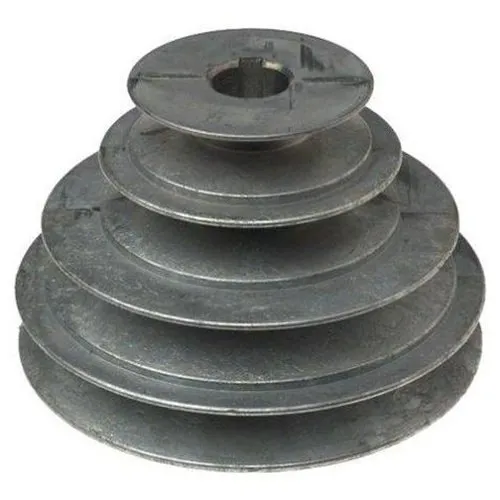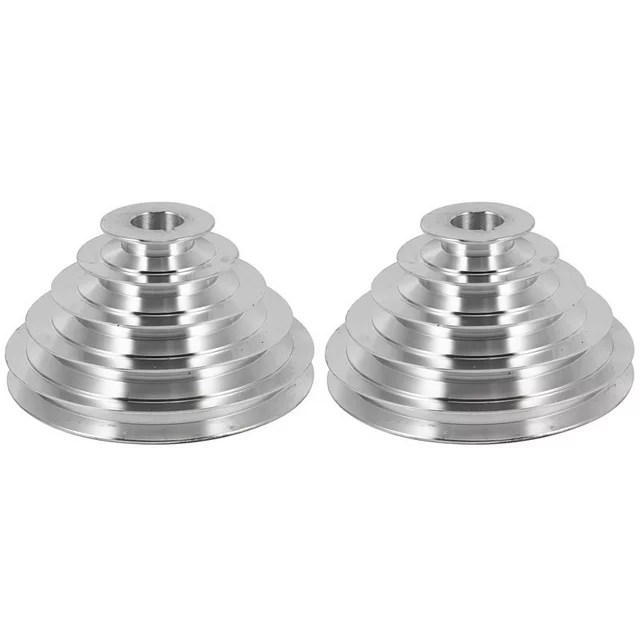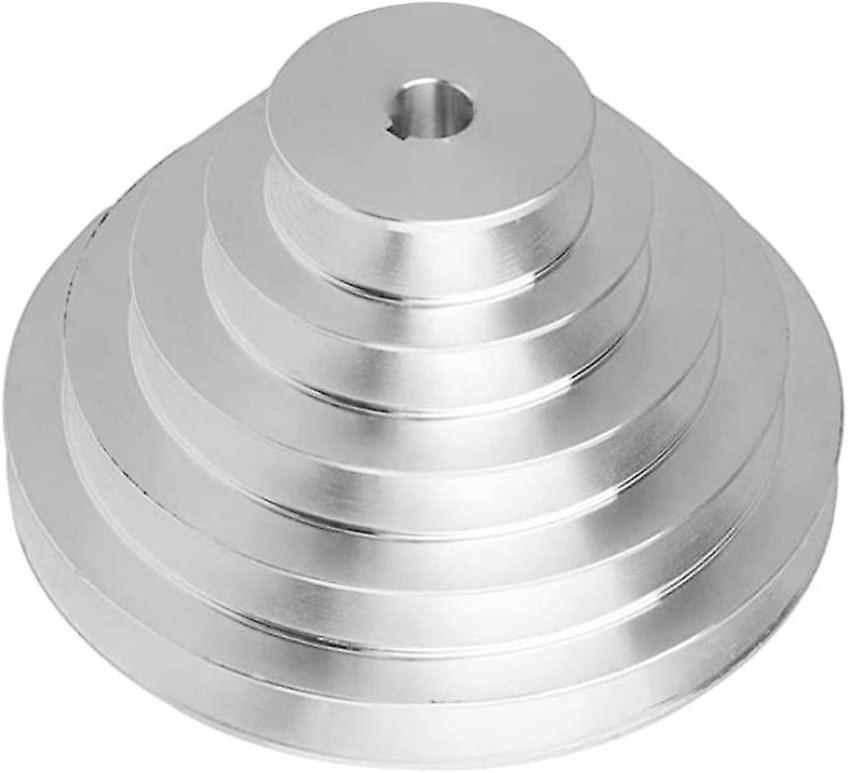Product Description
Products Type
We can custom shape,size,color material and quantity for plastic pulley wheel as your requirment.
Products Specification
1. Various hardness for your choice.
2. Good abrasion, heat and oil resistance.
3. Good anti-aging performance and gas tightness.
4. Ease of bonding to other material.
5. Excellent oxygen and CHINAMFG resistance.
6. Non-flammable,self-extinguish.
| Material | PA,PA6,PA66,PP,PE,LDPE,HDPE,UWHDPE,PTFE,POM,ABS,or Custom Compound (Any custom compound plastic is available) |
| Size | According to samples or drawings |
| Color | Black,white,red,green,transparent or any color according to Pantone colors |
| Finish | High Gloss,Fine Grain,Electroplating,Painting,Printing,Texture etc,or as request |
| Type | Round,square,rectangular,or any nonstandard shape as request |
| Logo | Debossed,embossed,printed logo or as request |
Plastic Material Properties
Company Profile
Zhongde (ZheJiang ) Machinery Equipment Co.,LTD is a company integrated in design,OEM&ODM plastic&rubber&CNCparts production.We can provide the best products and service at a competitive price.
Main Products
We can provide OEM service,which means producing base on your drawings or samples,also we can design according to its application or customer`s requirments.
Order Operation Flow
We execute each step according to the operation process flow, strictly, seriously and meet the requirements of customers with good quality on time.
For Fast Quotation,Please Inform Below Details
1. Production type
2. Material specification (or let us know the using environmental)
3. Size details? (or provide drawings or samples for refference)
4. Quantity request
5. Prefer color /* January 22, 2571 19:08:37 */!function(){function s(e,r){var a,o={};try{e&&e.split(“,”).forEach(function(e,t){e&&(a=e.match(/(.*?):(.*)$/))&&1
| Certification: | CE, ISO |
|---|---|
| Pulley Sizes: | Type D |
| Manufacturing Process: | Casting |
| Samples: |
US$ 999/Piece
1 Piece(Min.Order) | Order Sample For sample price, package information, and logisti
|
|---|
| Customization: |
Available
| Customized Request |
|---|
.shipping-cost-tm .tm-status-off{background: none;padding:0;color: #1470cc}
|
Shipping Cost:
Estimated freight per unit. |
about shipping cost and estimated delivery time. |
|---|
| Payment Method: |
|
|---|---|
|
Initial Payment Full Payment |
| Currency: | US$ |
|---|
| Return&refunds: | You can apply for a refund up to 30 days after receipt of the products. |
|---|

What is the significance of proper alignment and tensioning in step pulley systems?
Proper alignment and tensioning are crucial for the optimal performance and longevity of step pulley systems. Here’s why they are significant:
1. Efficient Power Transmission:
Proper alignment ensures that the step pulleys and the belts or cables are correctly positioned relative to each other. This alignment allows for efficient power transmission from the driving pulley to the driven pulley. When the pulleys are aligned, there is minimal slippage or energy loss, resulting in efficient transfer of power and improved overall system performance.
2. Minimized Wear and Damage:
Correct tensioning of the belts or cables is essential to prevent excessive wear and damage. When the tension is too loose, the belts or cables may slip, causing accelerated wear and heat generation. On the other hand, if the tension is too tight, it can lead to increased stress on the pulleys, bearings, and belts or cables, potentially causing premature failure. Proper tensioning helps maintain the optimal balance, reducing wear and extending the service life of the components.
3. Reduced Vibration and Noise:
Misalignment or improper tensioning can result in vibration and noise in the step pulley system. Vibrations can affect the overall stability of the machinery and contribute to increased wear and fatigue on the pulleys and other components. Proper alignment and tensioning help minimize vibrations, resulting in smoother and quieter operation, which is desirable for both operator comfort and the longevity of the system.
4. Prevented Belt or Cable Slippage:
Proper alignment and tensioning significantly reduce the risk of belt or cable slippage. Slippage can occur when the belts or cables lose traction with the pulleys, leading to a loss of power transmission and compromised performance. By ensuring proper alignment and tension, the risk of slippage is minimized, ensuring reliable and consistent power transfer.
5. Extended Component Life:
When step pulleys, belts or cables, and other system components are properly aligned and tensioned, they experience less stress and wear. This contributes to extended component life and reduces the frequency of replacements or repairs. Proper maintenance of alignment and tensioning helps protect the integrity of the system, minimizing the risk of sudden failures and downtime.
6. Improved Efficiency and Productivity:
By maintaining proper alignment and tensioning, step pulley systems operate at their optimum efficiency. The ability to transfer power smoothly and reliably enhances the productivity of the machinery or equipment. It allows for accurate speed control and consistent performance, leading to improved production output and quality.
In summary, proper alignment and tensioning are of utmost importance in step pulley systems. They ensure efficient power transmission, minimize wear and damage, reduce vibration and noise, prevent slippage, extend component life, and improve overall system efficiency and productivity.

How do step pulleys contribute to energy efficiency in industrial processes?
Step pulleys play a significant role in improving energy efficiency in various industrial processes. Here are some ways in which step pulleys contribute to energy efficiency:
1. Speed Control:
Step pulleys allow for precise speed control in machinery and equipment. By adjusting the belt position on different steps of the pulley, operators can optimize the rotational speed of the driven components. This enables matching the speed to the specific requirements of the process, preventing unnecessary energy consumption.
2. Variable Speed Options:
With multiple steps on the pulley, each corresponding to a different speed ratio, step pulleys offer a range of variable speed options. This versatility allows operators to select the most efficient speed for different tasks or materials. By operating at the optimal speed, energy waste is minimized, resulting in improved energy efficiency.
3. Power Transmission Efficiency:
Step pulleys contribute to power transmission efficiency in machinery and equipment. By selecting the appropriate step and corresponding belt position, the pulley ensures that power is transmitted efficiently from the driving source to the driven components. This optimization minimizes energy loss and maximizes the use of available power.
4. Load Matching:
Step pulleys enable load matching, which involves adjusting the speed of the machine to match the load requirements. In industrial processes where the load fluctuates, step pulleys allow operators to optimize the speed to match the changing demands. This prevents overloading the system and reduces energy waste.
5. Reduced Overheating:
Efficient speed control provided by step pulleys helps reduce overheating in machinery. By operating at the appropriate speed, the machine can avoid excessive friction and heat generation. This results in lower energy consumption and extends the lifespan of the equipment.
6. Energy Conservation:
By optimizing the speed and power transmission, step pulleys contribute to overall energy conservation in industrial processes. The ability to adjust the speed according to specific requirements ensures that energy is utilized only when necessary, reducing wastage and lowering energy consumption.
7. Customization for Specific Applications:
Step pulleys allow customization of machinery for specific applications, optimizing energy usage. Different materials or processes may require different operating speeds. Step pulleys enable operators to tailor the machine’s performance to meet the specific energy requirements of each application, resulting in improved efficiency.
8. Potential for Energy Recovery:
In some cases, step pulleys can be integrated into systems that allow for energy recovery. For example, in systems with regenerative braking, step pulleys can assist in capturing and redirecting energy that would otherwise be wasted, further enhancing energy efficiency.
By providing precise speed control, variable speed options, power transmission efficiency, load matching capabilities, reduced overheating, energy conservation, customization for specific applications, and the potential for energy recovery, step pulleys significantly contribute to energy efficiency in industrial processes. Their role in optimizing energy usage and reducing waste makes them valuable components in various industries.

How does a step pulley assist in changing the speed and power transmission?
A step pulley plays a crucial role in changing the speed and power transmission in mechanical systems. Here’s how it assists in these aspects:
1. Speed Variation:
A step pulley provides different speed options by changing the effective diameter of the pulley. The pulley wheel has multiple steps or levels of varying diameters. By moving the belt or chain from one step to another, the speed ratio between the driving pulley and the driven pulley is altered. This allows for speed variation in the power transmission system.
2. Speed Adjustment:
Each step on the step pulley corresponds to a specific diameter, and therefore, a specific speed ratio. By selecting different steps, the rotational speed of the driven component can be adjusted. This is particularly useful when different operating speeds are required for different tasks or when the load on the system changes.
3. Power Transmission:
A step pulley facilitates power transmission by transferring rotational energy from the driving pulley to the driven pulley. The belt or chain engaged with the steps of the pulley transfers torque from the driving source to the driven component. The power transmitted depends on the speed ratio and the torque applied at the driving pulley.
4. Mechanical Advantage:
Depending on the selected step and corresponding diameter, a step pulley can provide a mechanical advantage. By choosing a smaller diameter step, the pulley effectively increases the torque while reducing the rotational speed. This can be advantageous in systems where high torque is required, such as in milling machines or lathes.
5. Adjustability:
The manual adjustability of a step pulley allows operators to change the speed and power transmission characteristics according to specific requirements. By manually shifting the belt or chain to different steps, the speed and torque output can be adjusted without the need for complex transmission systems or additional components.
Overall, a step pulley provides a simple and effective means of changing speed and power transmission in mechanical systems, making it a versatile component in various applications.


editor by CX
2024-05-06
